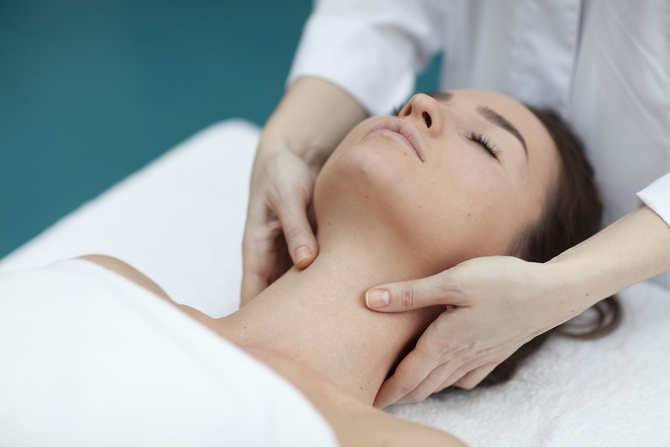Headache and cervical pain: relationship and therapies
What is the relationship between headache and cervical tract and what is neck pain, how to make friends with the paravertebral muscles and get in touch with the enormous importance that the first vertebrae of our body play, from atlas to the seventh

Photo credit
© gstockstudio – 123rf.com
Many complain of “having the cervical”. And luckily, one would say. Yes, because cervical pain is called cervical pain in the correct medical lexicon and is a pain that can be sudden and intense and also compromise the twisting and bending of the neck.
Let’s see what are the possible causes and the relationship with the headache .
Neck pain and headache
In the event of a trauma , it is obviously advisable to intervene immediately, immobilize the cervical spine and be followed by an orthopedist, physiotherapist, chiropractor or osteopath. The intervention, in the case of a trauma, must be sudden, especially if headaches and nausea occur.
But what should be done when the headache appears episodically and the neck also hurts on and off but repeated over time? It could be a chronic neck pain due to an accumulation of tensions that are both linked to the muscle groups, both to the nervous system, and to the emotional balance (it is no coincidence that we are talking about referred visceral pain ).
On the other hand, when the pain extends to an arm or a hand, a nerve or nerve root is directly affected and a specific examination is required.
Finally, in the event that the pain is only present when swiveling, joint cracking occurs and the situation gets worse with humidity, it could be cervical arthrosis .
Lymphatic treatment for neck pain and headache
Lymphatic massage , when done well, is a wonderful technique for relieving pain and letting stagnant energy flow into the cervical area , which can lead to chronic headaches.
From the top of the dorsal rachis to the seventh cervical there are very important “water stations” which in the lymphatic treatment are subjected to skimming, symmetrical pumping and light manipulations, delicate vibrations.
The lymph nodes of the neck are the receptacle of lymphatic channels coming from the lymph node circle of the head and those of the pharynx, esophagus, larynx, trachea, palatine vault and thyroid area; they are all located on the front and are divided into deep and superficial.
In fact, in case of neck pain it is an effective treatment, as it removes lymphatic blockages and congestions , which are often the cause of headaches and other symptoms linked to an inefficient mechanism of elimination of toxins.

Also try natural anti-inflammatories for cervical headache
Ayurvedic massage for neck pain and headache
Another very useful treatment is the Ayurvedic massage : the classic Ayurvedic abhyanga massage involves specific maneuvers that relieve neck pain.
However , the specific massage for the cervical is called greeva (neck) vast (collect, hold). The ayurveda operator uses a mixture of flours and herbs that is placed on the neck in a circular way, as if to create a small basin; this basin is filled with lukewarm medicinal oil for a certain period of time necessary to make it penetrate into the underlying tissues.
Both in the case of this last treatment and of the classic abhyanga it is good to do the first sessions with a certain regularity .

Strengthen the cervical paravertebral muscles
Any discipline you do, be it Feldenkrais , postural gymnastics, pilates, yoga , gentle gymnastics, meridian stretching , tai chi chuan or the like, any exercise that involves neck torisone should be performed slowly and gently, avoiding sudden movements or forcing too much tension.
The goal of any exercise intended for the cervical spine , regardless of the discipline, is to loosen stiffness , relax the muscles, improve posture , relieve pain.
In combination with the neck exercises, it is also good to perform movements aimed at relieving the tension of the shoulders and upper back , mobilizing the shoulder joints. Notice if the jaw is relaxed or not and it is very important not to clench your teeth .
Then remember that a good way to “free the neck” is to strengthen the abdominals , but even in this case you must avoid stressing the cervical tract, which instead often happens in exercises performed in the gym without supervision. The cervical tract should always remain long and neutral and the abdominal work should be dedicated to the deep muscles.




























+ There are no comments
Add yours